Patricia Morales | Alaska Business
Same Spawn
swimming upstream
By Jamey Bradbury
ick Mystrom made a name for himself before becoming mayor of Anchorage, and before organizing bids to host the Winter Olympics, by co-founding an advertising agency in 1975. Mystrom/Beck Advertising isn’t around anymore; it became the Nerland Agency under the leadership of Rick Nerland. His name likewise preceded him: Nerland’s great-grandfather was a Chilkoot Stampeder who started a furniture store, and his grandfather was a former mayor of Fairbanks who helped frame the Alaska Constitution.
The legacy of Mystrom/Beck Advertising and the Nerland Agency continues as Spawn Ideas, and its fifty-year mission remains the same: helping clients make names for themselves.
Those giant wraparound ads on People Mover buses? Yoga in the Park with The Alaska Club? The surprise of hearing a local commercial while listening to Spotify? All ideas from Spawn.
By the time Nerland left his agency in 2013, he had transitioned the company to employee ownership. Led by CEO Karen King, the company had entered a new era, deserving of a new name.
“We wanted something that was a more shared identity, since we were agency owners, as employees,” recalls Spawn President Kaylee Devine. “Spawn Ideas: it’s an Alaskan name, but not too on the nose. It does a good job of going to the core of what we do best, which is bring big ideas to our clients.”
Devine came on board with Spawn’s account service and spent eleven years growing with the agency and helping shape the innovative, deeply researched marketing campaigns Spawn would become known for. After a brief hiatus working as the senior director of marketing and communications at NANA North, Devine found herself drawn back to the agency this March—just in time to weather the next iteration of Spawn Ideas.
In January, the agency announced its acquisition by Strategic America, a full-service marketing agency based in West Des Moines, Iowa, and a frequent partner to Spawn. Ten years ago, King began a partnership with Strategic America; collaborating on projects allowed each agency to do what they did best while elevating the level of service each firm could bring to clients.
The acquisition is a natural outgrowth of the agencies’ strong collaboration and bank of complementary services, says Devine. “It gives us much deeper bench strength, while still retaining our Alaska roots.”
“Through all these evolutions, we haven’t lost the core of who we are,” emphasizes Kathy Norford, Spawn’s vice president and media director. “While we keep adapting, we still stick true to who we are as an agency.”
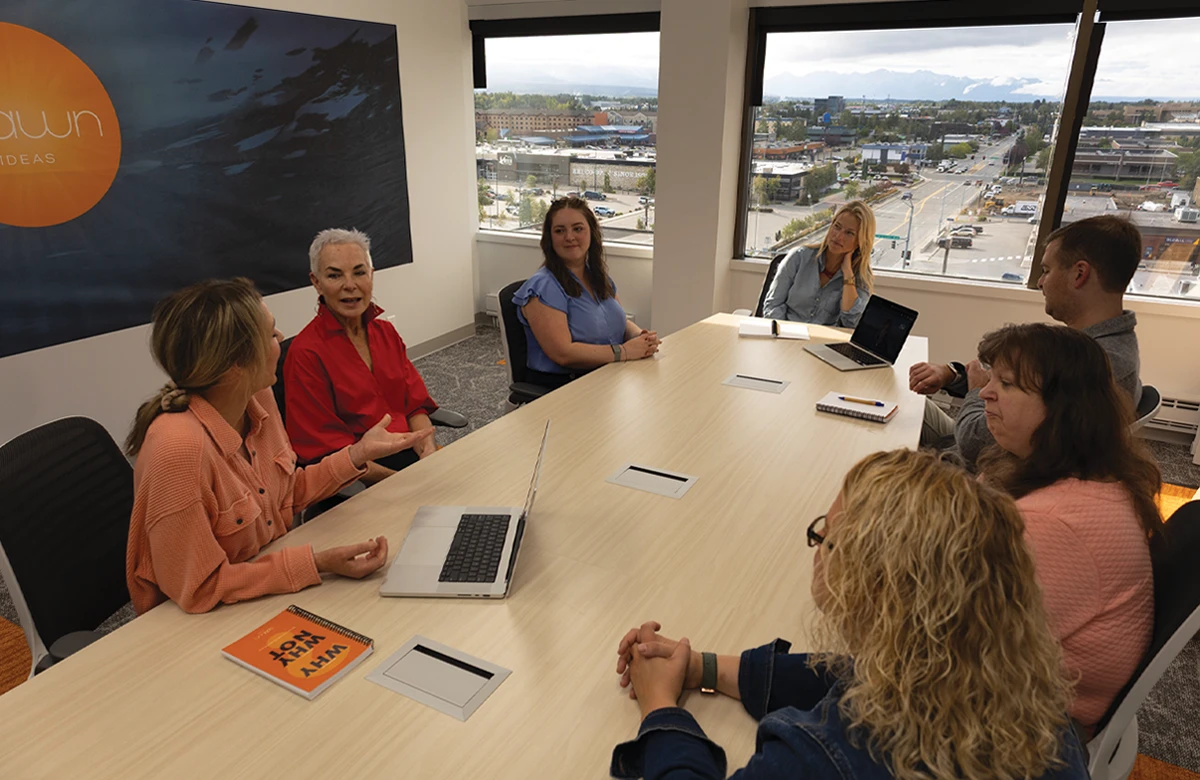
Spawn staff meet in their new office, including several staff working remotely.
Patricia Morales | Alaska Business
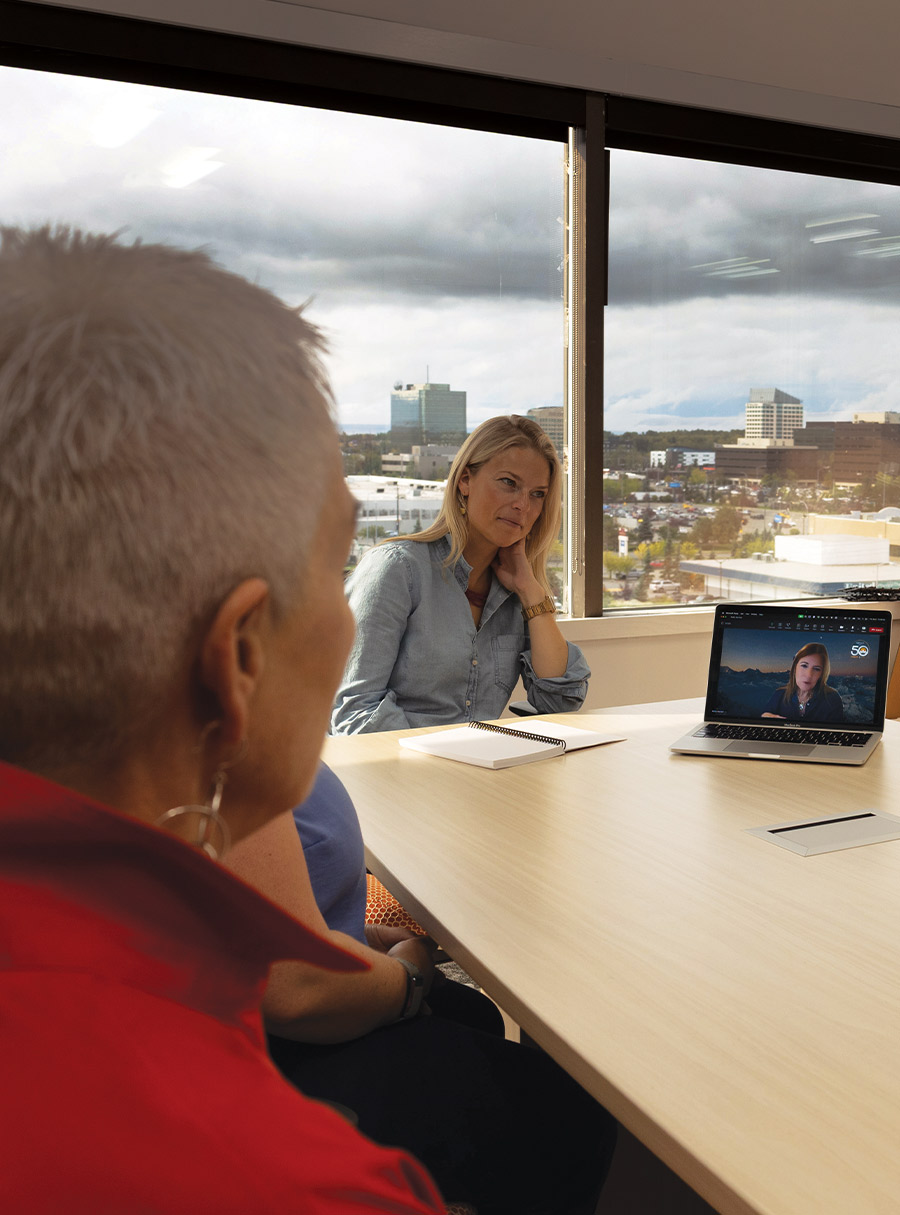

Patricia Morales | Alaska Business

Spawn Project Supervisor Chris Acher at work.
Patricia Morales | Alaska Business
Spawn Project Supervisor Chris Acher at work.
Patricia Morales | Alaska Business
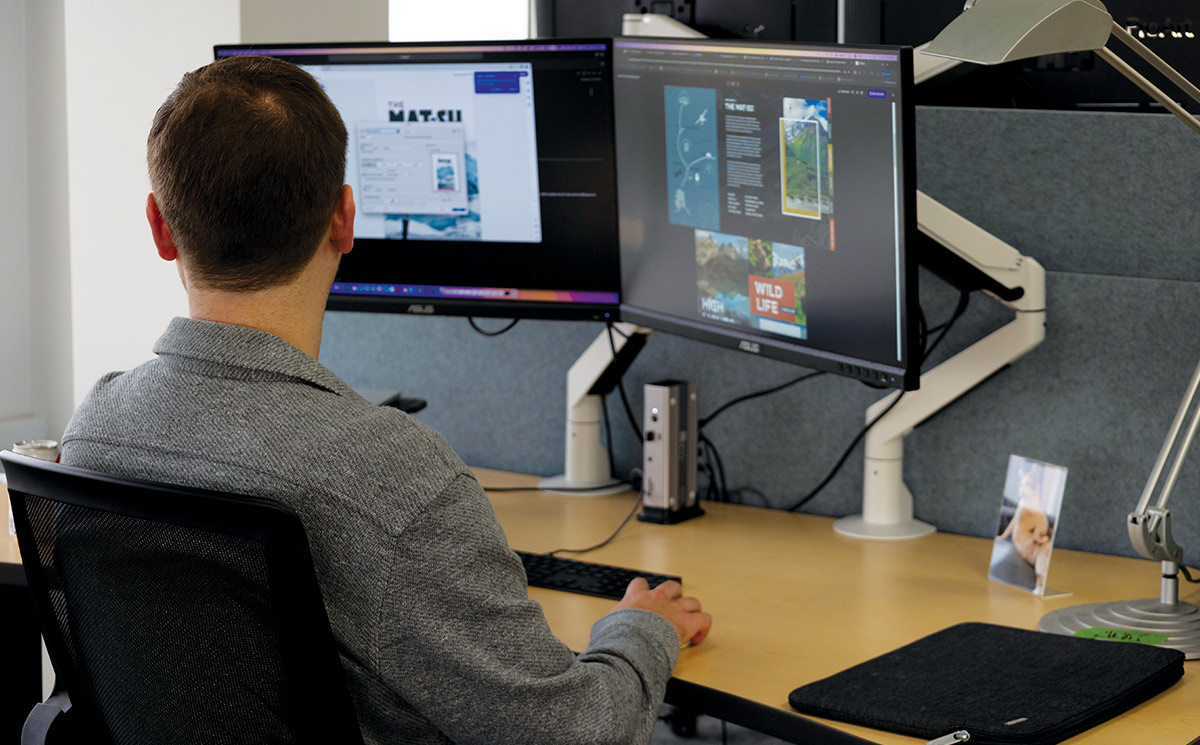
Spawn leadership promotes a balance between its employees’ work and professional lives, enhancing a positive and productive work environment.
Patricia Morales | Alaska Business
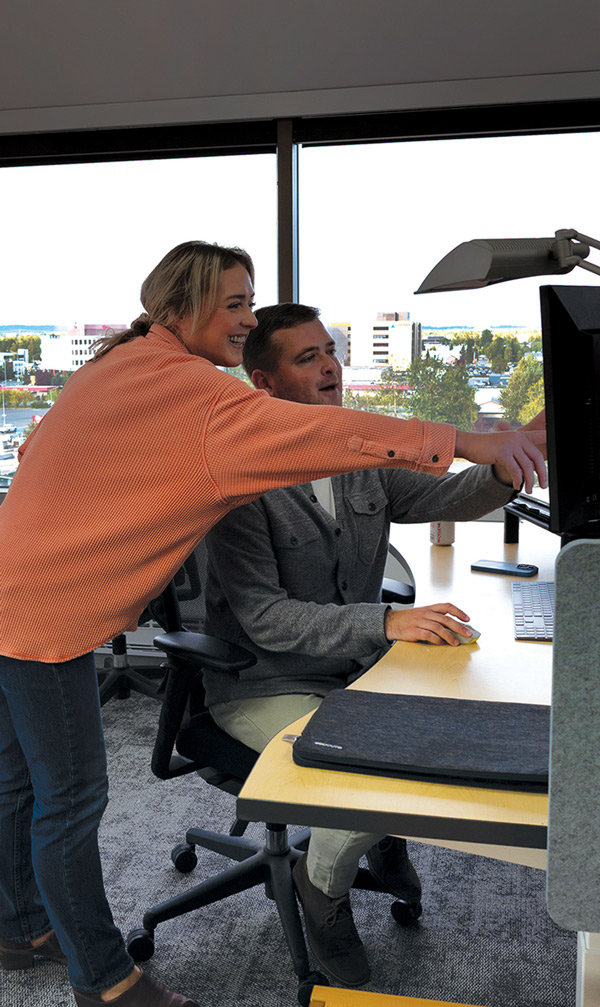
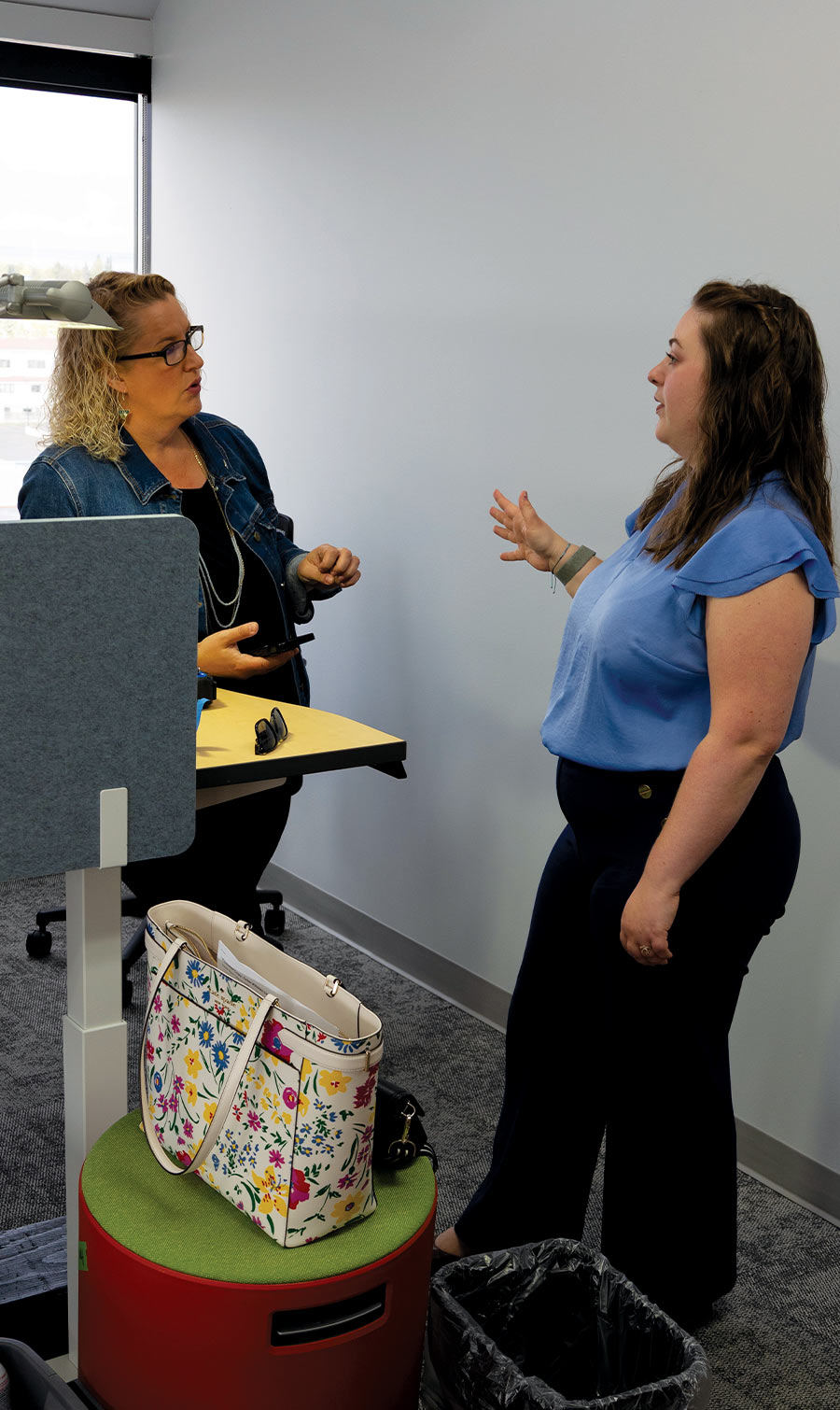
That’s how Spawn came to launch Bore Tide One Source, which offers high-quality printing and custom-designed swag options for the agency’s clients. In 2017, Spawn also created Hooligan, becoming Alaska’s first marketing firm with a dedicated account planning service. The Hooligan team focuses on conducting the primary research and strategy work upon which Spawn’s marketing campaigns are built.
The team doesn’t just ask questions and hold focus groups. “We’ve gone into people’s homes and done ethnographic research and shop-alongs,” Devine describes.
Hooligan, Norford is quick to point out, really grew out of Spawn’s desire to be a trusted partner to its clients.
“Our clients have pushed us to do what we do—being more than just their advertising arm but an extension of their teams,” she says. “When we look back at our body of work and then look at that Top 49ers list, we’re really proud of what we do to keep this work in Alaska and bring good work to those clients.”
“She told us these heart-wrenching stories about how these kids face adversities you wouldn’t ever consider, but they would still be balancing [those challenges] with just wanting to be a kid,” she recalls.
Hooligan went directly to the students to better understand the challenges that kept them from achieving graduation. The conversations led them to create an iconic campaign, “Look Beyond the Labels,” that made use of striking imagery and fonts to invite viewers to empathize with each student’s situation rather than regard them as victims. The campaign is credited with a 22 percent increase in Anchorage’s graduation rate.
Spawn’s “scrappy” research methods have led to continued success on campaigns as varied as GCI’s launch of the iPhone 15, which emphasized the phone’s durability to appeal to Alaska’s outdoor-minded audience, and the Alaska Travel Industry Association’s recruitment campaign, an effort to draw workers into the tourism industry, post-COVID-19. For the latter campaign, Spawn faced fierce competition from other industries fighting to recruit from a small pool of people.
To hone an inspiring message, Hooligan dived deep into research, reading blogs by people who’d come to Alaska from the Lower 48 to do seasonal work. The discovery that seasonal workers valued their experience as “braggable” moments that made them more interesting as individuals led Spawn to create a successful digital and social media campaign.
“We love those types of challenges,” Devine shares. “You can’t talk about wages, you don’t have much time to put this together, and you don’t have an unlimited budget—that’s where we really shine.”
“The Spawn team has helped us test new ideas and shape campaigns that resonate with our audiences and drive results,” says Lael Oldmixon, executive director of the Education Trust of Alaska. The trust achieved a 150 percent increase in University of Alaska applicants, thanks to a Spawn direct-mail campaign that accompanied students through their high school years with interactive, relatable, and fun content that encouraged graduates to stay in Alaska.
“It’s unusual to see in advertising, which can be a bit of a grind,” adds Norford. “To have people who leave and come back is really a testament to the culture we’ve built here.”
A big driver of that culture is Spawn’s all-female leadership team. Led by King, Spawn executives regard “work/life balance” as more than a corporate slogan. Employees are encouraged to bring their infants, up to six months or crawling age, into the office so they don’t have to choose between parenthood and work. Spawn celebrates “summer Fridays,” which encourages employees to leave work early to capitalize on Alaska’s brief window of good weather. Another policy allows staff in good standing to work remotely for a month.
“Being a female-led agency influences the work style we have and our approach to our clients,” says Devine. “How can you challenge the norm? Part of the reason our campaigns are so good is because we listen to the people we’re trying to influence. We lead with empathy. We’re not just talking to them but really meeting them where they’re at.”
“Now you can create your own little bubble of personalized content,” she says. “It makes our job an ongoing challenge to make sure how we’re telling stories really connects with people the way they expect to be connected to.”
The increased use of generative AI may help better target those niche audiences. While the agency sees the evolution of technology as an opportunity and is exploring ways to use AI to assist workflow, Norford says there’s no substitute for the creativity of the people behind Spawn.
“We’re so well positioned [to capitalize on AI] because our drive for genuine human understanding complements the benefits of the advanced tech, allowing it to work harder for us,” she says.
Whatever the future brings, Devine emphasizes that it’s the clients Spawn has served for fifty years that have brought the agency to where it is today. In turn, those strong partnerships are how Spawn has stayed at the forefront of Alaska’s media landscape.
“When we look back at fifty years, we think about how much we have done to drive business and to really fuel our Alaska economy,” Norford remarks. She adds that, with the new Strategic America partnership, “There’s no reason a client would need to go to an agency outside of the state. We can offer anything now that an outside agency could, and more so, because we have that Alaska know-how.”